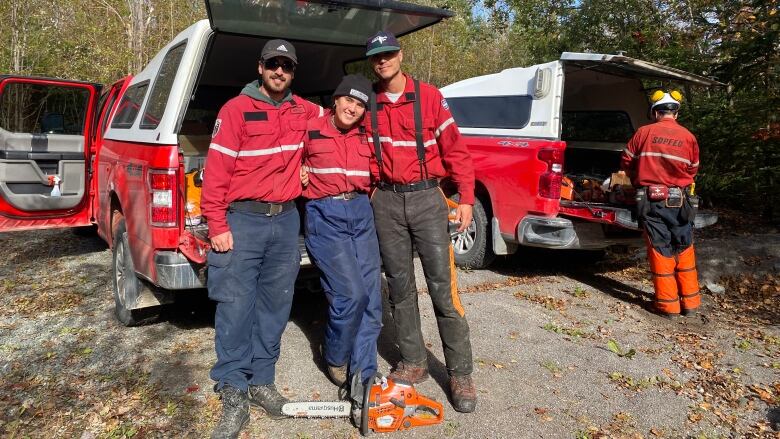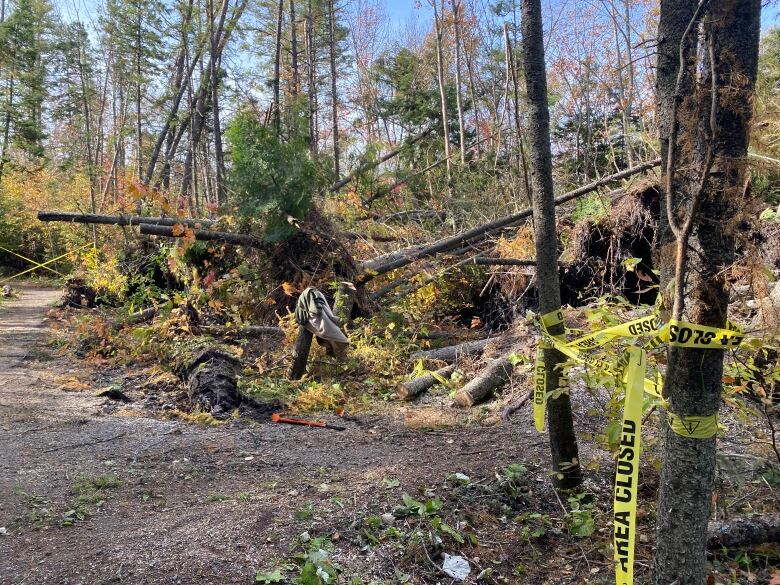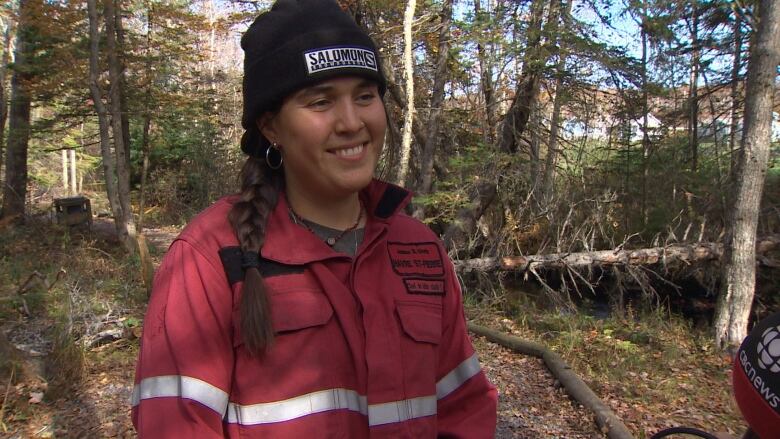Crews clear fallen trees from Sydney walking trail and streams as fish prepare to spawn
Forty firefighters from Quebec helped in the effort to clear toppled trees

A popular walking trail in Sydney, N.S., has reopened after being blocked since late September whenpost-tropical storm Fiona barrelled through, knocking more than 400 trees onto pathways and waterways, and jeopardizing habitats for some fish species.
Some areas of the Baille Ard Nature Trail were impassable for the last two weeks, but out-of-province crews and local volunteers worked Wednesday and Thursday to clear trees that posed safety risks for the public and animals alike.
"A lot of fish are using the waterways these days, as it's spawning season," said Morgan Campbell, chainsaw operator on the habitat restoration team for the environmental protection group, ACAP Cape Breton.
"They're trying to get upstream and spawn so having trees in it blocking it, it's not such a good thing for them," Campbell said.
"If there is blockages, if there's anything that might hinder the survival or the hindrance of an animal's lifestyle, we come out there and we try to help them out a little bit," he said.

Dennis Shea, vice-president of the Baille Ard Trail Association, was grateful for the extra hands working along the three-kilometre trail.
Shea says their volunteer base is aging, with the majority of members around 70 years old.
He said the groupwas overwhelmed by the severityof damage along the trail and did not know where to start.
The association put a call out to the Department of Natural Resources, who delivered an "unbelievable gift," according to Shea.
Forty wildland firefighters arrived from Quebec with chainsaws in hand and went to work.

Jeanne Bellavance-Morinis part of the crew that worked 12-hour days to clear hundreds of fallen trees. The crew is leaving Nova Scotia on Friday.
She travelled from Havre-Saint-Pierre, Que., a town on Saint Lawrence River's north shore.
"There are some trees that are harder to deal with because some trees have fallen like one into the other," she said.
"But we're really making sure we stay safe and we don't cut trees that are too dangerous for us while still clearing the trails for everybody."
The crews were called in two weeks ago to focus on cutting down trees that posed a risk of falling in parks and school grounds.
"The thing that stayed with me the most was the gratitude of the people that we helped," Bellavance-Morin said.

The help is much appreciated, but Shea says there is still a long way to go to restore the walking trail to its pre-Fiona condition.
"We have the mess all along the trail to clean up, so that's going to be probably another year at least to get that to where we want to be," he said.
Despite all the damaged trees, the newly cut logs won't go to waste. The group will place them along banks that are prone to flooding.
"If we build up the side, that water will be bounced back into the stream again, and that'll protect the trail," said David Gabriel, president of the association.
Shoring up the bank will also create safe habitats for species that swim there.
"We now have some resources that we can use."












_(720p).jpg)


 OFFICIAL HD MUSIC VIDEO.jpg)
.jpg)



























































































